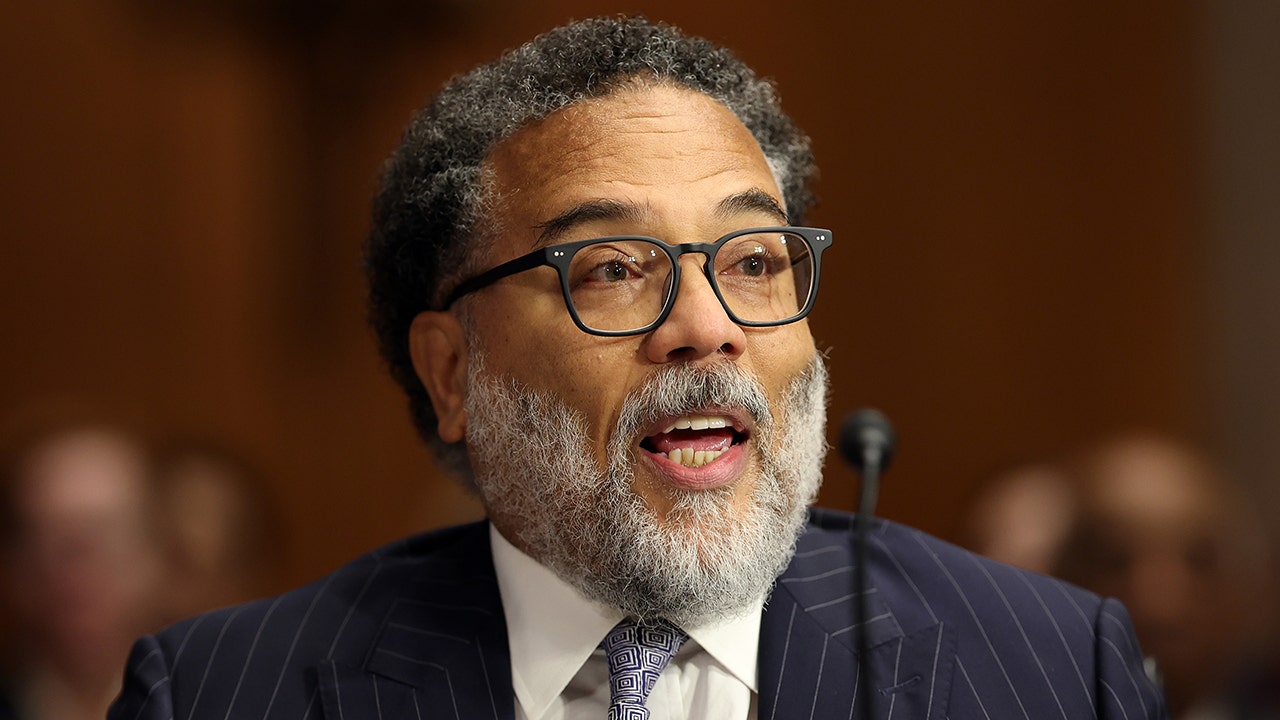Education
Generation X Is Staring Down Retirement, and Student Loan Debt

As Generation X comes within shouting distance of retirement, with its oldest members just four years shy of the age at which they can begin drawing Social Security, the retirement plans of these Americans could be disrupted by debt, especially with the student loan-payment pause coming to an end.
Generation X is categorized as those born roughly from 1965 to 1980, which means the oldest members are 58 — only about a year or so away from being able to withdraw retirement funds without a penalty, and less than a decade away from eligibility for Medicare.
As of the first quarter of this year, members of Generation X held about a quarter of the nation’s outstanding $1.6 trillion in student loan debt — to the tune of nearly $49,000 per borrower, according to TransUnion, the credit reporting bureau. And this fall, people will need to once again start paying those balances down. Beginning in September, loans will resume accruing interest, and payments will be due in October, the first time since March 2020.
For people like Renita Thompson of Washington, D.C., the fast-approaching deadline makes planning for the future more challenging. Ms. Thompson, 51, is earning a bachelor’s degree in human resource management and owes between $75,000 and $80,000 in a combination of federal and private student loans.
Ms. Thompson said she was able to use the three-year pause on student loan payments to pay off some other debts. Completing a debt-management program with a credit counseling organization, GreenPath, allowed her to pay off roughly $15,000 in credit card debt, she said.
“When I do get the degree, I think that is going to elevate my pay,” Ms. Thompson said. But she estimated she still had another three or four years to go before the remainder of her student loans would be paid off. “It’s going, but not as quick as I thought in my mind,” she said. “As I’m getting older, I wish I would have thought about this earlier.”
This is a common predicament, said Trent Graham, a financial counselor at GreenPath. “In general, we’ve seen clients focusing more on savings and not focusing on those student loans,” he said. “They really didn’t have a plan to address those student loans.”
Mr. Graham said a lot of borrowers were surprised when they realized how much student loan debt could grow, since it continued to accrue interest even if the borrower had placed the loan in deferment or forbearance. (Loans in forbearance still accrue interest, while deferment of subsidized loans puts a pause on interest accrual.) The pandemic pause was an exception in this respect, with interest accrual as well as monthly payments suspended.
“I just don’t think they understand the ramifications of the interest being charged on that debt over time,” Mr. Graham said. “We find that a lot.”
Higher college costs, fewer pensions
Generation X faces a dispiriting confluence of socioeconomic trends. In the workplace, these employees were the first for whom defined contribution retirement plans like 401(k)s started replacing defined-benefit pensions.
“The biggest shift it makes is, it puts more of the burden of saving for retirement on them,” said Tyler Bond, director of research at the National Institute on Retirement Security, a nonprofit research and policy organization. “When you’re thinking about the impact of student loan debt on retirement savings, this is where this intersection starts,” he said.
At the same time, Generation X was enrolling in college just as the cost of higher education broke a decades-long pattern of stability. The Department of Education’s National Center for Education Statistics data shows that, adjusted for inflation, college tuition stayed stable for much of the 1970s and even ticked down some years, but in the early 1980s — right around when the oldest Gen Xers started graduating high school — those expenses started climbing and haven’t stopped.
Studies have found evidence that student loan debt can hurt how much people save for retirement. In 2018, researchers at the Center for Retirement Research at Boston College found that while student debt did not deter young adults from signing up for a 401(k) account, it did affect how much they contributed to it.
Borrowers are apt to save less, regardless of the amount they owe, said Matt Rutledge, an associate professor of the practice of economics and a research fellow at the Center for Retirement Research.
“It’s the presence of any loan at all; if you have a loan, you probably think of yourself as not having the bandwidth to think about retirement yet,” he said.
This has an outsized effect on members of Generation X, who number about 65 million Americans, as they reach their peak earning years. “For people who have been carrying these loans for multiple decades, they probably didn’t save much to begin with, so you really are taking away some of their best saving years,” Mr. Rutledge said.
Mired in debt
There are other indications that many members of Gen X are reaching the cusp of retirement financially unprepared. The Transamerica Center for Retirement Studies finds that although about 80 percent of Gen Xers are saving, each contributes only 10 percent of their annual earnings and, at the median, has a balance of $82,000 in their 401(k) or similar retirement account. As a rule of thumb, many experts urge savers to put away 15 percent of their income, and some planners recommend that savers have six times their salary accrued for retirement by the age of 50.
An annual study conducted by Northwestern Mutual found that 55 percent of Generation X did not believe they would be financially prepared for retirement.
Christian Mitchell, chief customer officer at Northwestern Mutual, said these borrowers faced unappealing choices: Work longer, or live on less in retirement.
“Retirement is theoretical, until it’s not,” he said. “What likely exacerbates it here is all the economic turmoil we’ve had over the past few years.” For a generation in its peak earning years, the disruption of that momentum, when millions of jobs were lost during the pandemic, can create a financial shortfall from which it can be difficult to recover.
The reality is that a certain number of these borrowers will likely have to both work longer and live more frugally, especially because student loans, unlike other types of unsecured debt like credit card and medical debt, can’t be easily discharged in bankruptcy.
Juggling kids’ costs with their own
Overall, Generation X was already carrying a lot of debt: The online lending platform LendingTree found that this age group had the most mortgage as well as nonmortgage debt, averaging more than $167,000 per borrower. The higher interest rates borrowers are paying today, a function of the Federal Reserve’s battle against inflation, makes it harder to pay off variable-rate debts, since a greater amount of each monthly payment goes to servicing the debt itself rather than paying down the principal.
“It has more of an impact on their overall budget, which means a more difficult time covering other expenses,” Mr. Graham said.
The burden of student debt threatens to exacerbate existing income and wealth inequality in American society, as these borrowers have to choose between paying off the cost of their own education and saving for their own children’s college expenses.
Terrell Grant, a health care worker who manages a home-care agency in Sacramento, is putting money into a 529 account to help fund college for his two children, ages 12 and 10, even though he is working two jobs to pay back the roughly $110,000 he borrowed to earn a bachelor’s and a master’s degree.
A first-generation college graduate, Mr. Grant, 40, said he didn’t regret investing in his education, but he acknowledged that he has had to recalibrate his expectations for retirement.
“I’m hoping to work until 55, but just the way things are looking, it’s looking more like 65,” he said, adding that he is pushing his children to consider educational opportunities that won’t require borrowing. “I try to educate them,” he said, about the long-term ramifications of student loan debt. “If they can avoid taking them out, that would be ideal.”
‘I’m praying it won’t be crazy’
In addition to the financial burden, experts say carrying student loan debt well into adulthood can weigh on borrowers’ mental health.
“Preparing for retirement is a big concern,” said David Simula, assistant vice president for the wealth management group at SAFE Credit Union in Sacramento, where Mr. Grant banks.
In its study, Northwestern Mutual found that only about half of Gen X survey respondents believe they have or will achieve financial security, which is five percentage points lower than respondents across all age groups. Gen X respondents also expressed lower confidence about their prospects for career success and their ability to plan for unexpected events or emergencies than the overall pool of respondents.
“Debt, writ large, is a concern for Gen Xers,” said Mr. Mitchell of Northwestern Mutual. “To the extent some of them are still carrying student loan debt, I think it can be a flashpoint, a touchstone for broader worries about retirement.”
Adding to this generalized anxiety is the uncertainty student loan borrowers are feeling about the amount of the monthly bill they will face when their payments restart.
“I’m praying it won’t be crazy,” said Ms. Thompson, the Washington recruiter. She said she was financially and mentally prepared to pay as much as $500 a month, but she worried how she would manage if the payments turned out to be higher. “I’m hoping it’s not more than that,” she said.

Education
Video: Several Killed in Wisconsin School Shooting, Including Juvenile Suspect

new video loaded: Several Killed in Wisconsin School Shooting, Including Juvenile Suspect
transcript
transcript
Several Killed in Wisconsin School Shooting, Including Juvenile Suspect
The police responded to a shooting at a private Christian school in Madison, Wis., on Monday.
-
Around 10:57 a.m., our officers were responding to a call of an active shooter at the Abundant Life Christian School here in Madison. When officers arrived, they found multiple victims suffering from gunshot wounds. Officers located a juvenile who they believe was responsible for this deceased in the building. I’m feeling a little dismayed now, so close to Christmas. Every child, every person in that building is a victim and will be a victim forever. These types of trauma don’t just go away.
Recent episodes in Guns & Gun Violence
Education
Video: Biden Apologizes for U.S. Mistreatment of Native American Children

new video loaded: Biden Apologizes for U.S. Mistreatment of Native American Children
transcript
transcript
Biden Apologizes for U.S. Mistreatment of Native American Children
President Biden offered a formal apology on Friday on behalf of the U.S. government for the abuse of Native American children from the early 1800s to the late 1960s.
-
The Federal government has never, never formally apologized for what happened until today. I formally apologize. It’s long, long, long overdue. Quite frankly, there’s no excuse that this apology took 50 years to make. I know no apology can or will make up for what was lost during the darkness of the federal boarding school policy. But today, we’re finally moving forward into the light.
Recent episodes in Politics
Education
Video: Los Angeles Bus Hijacked at Gunpoint

new video loaded: Los Angeles Bus Hijacked at Gunpoint
transcript
transcript
Los Angeles Bus Hijacked at Gunpoint
The person suspected of hijacking a bus which killed one person, was taken into custody after an hourlong pursuit by the Los Angeles Police Department early Wednesday morning.
-
“Get him.”
Recent episodes in Guns & Gun Violence
-

 Business7 days ago
Business7 days agoThese are the top 7 issues facing the struggling restaurant industry in 2025
-

 Culture7 days ago
Culture7 days agoThe 25 worst losses in college football history, including Baylor’s 2024 entry at Colorado
-

 Sports6 days ago
Sports6 days agoThe top out-of-contract players available as free transfers: Kimmich, De Bruyne, Van Dijk…
-

 Politics5 days ago
Politics5 days agoNew Orleans attacker had 'remote detonator' for explosives in French Quarter, Biden says
-

 Politics5 days ago
Politics5 days agoCarter's judicial picks reshaped the federal bench across the country
-

 Politics3 days ago
Politics3 days agoWho Are the Recipients of the Presidential Medal of Freedom?
-

 Health2 days ago
Health2 days agoOzempic ‘microdosing’ is the new weight-loss trend: Should you try it?
-

 World7 days ago
World7 days agoIvory Coast says French troops to leave country after decades














